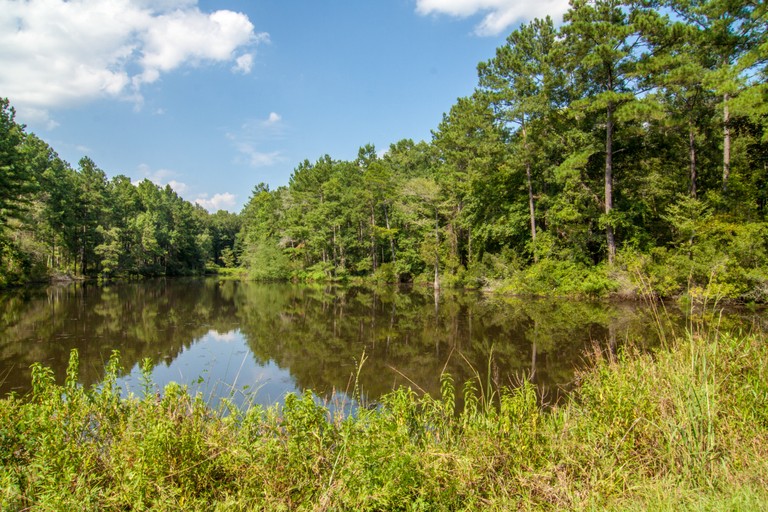Updates & Blog
National Drinking Water Week: Healthy Forests and Water Quality

I grew up in New York City, drinking water that originated 125 miles away in the Catskill Mountains. Because the Catskill region is heavily forested, it produces high-quality drinking water that needs very little treatment. At a young age, I knew that having such clean water in the middle of one of the world’s biggest and most polluted cities was a monumental achievement – and I now devote my career to ensuring such critical forests remain intact so that we all have safe and reliable drinking water into the future.
There is unified agreement that keeping healthy forests intact provides the best water quality of all land uses. Even if drinking water sources aren’t located within a forested environment, chances are very high that those source watersheds derive much of their water quality from forested uplands and headwaters. While the southern United States is blessed with over 245 million acres of forestlands, future projections indicate that up to 23 million acres are at risk of being converted to other uses by 2060, potentially threatening the region’s water supply.

It is vital that we continue to raise public awareness about the important connection between healthy forests and our own health by way of access to clean drinking water, and to generate support for keeping forests as forests. There are several great, new resources available to our partners that highlight the critical importance of healthy forests for drinking water in the southeast and beyond.
- The Forest and Drinking Water video series demonstrates the strong connection between forests and drinking water. These videos were produced by Texas A&M Forest Service and the Southern Group of State Foresters, with support from US Forest Service and Southeastern Partnership for Forests and Water.
- An infographic that illustrates the forests-drinking water connection with some key facts and data that most of us don’t know but probably should!
- A story map that quantifies the role state and private forests play in providing drinking water for the south.
- A fact sheet by the American Water Works Association that details how partners can work with the US Forest Service on protecting drinking water sources.
- The Forestry Learning Exchange, established by the National Source Water Collaborative, features webinars, tools and resources to educate utilities and other partners on how to collaborate with the forest sector to protect and steward our nation’s drinking water.
- The Keeping Forests podcast, How the River Flows, focuses on the integral connection between forests and drinking water.
- The NRCS Regional Conservation Partnership Program now provides financial support to qualifying projects that benefit both forests and drinking water.
We all have an opportunity during National Drinking Water Week, and every day, to teach our children, families, friends, and colleagues about the important role forests play in protecting our nation’s drinking water. Please share these resources widely to raise awareness and stimulate action to keep critical forests intact.